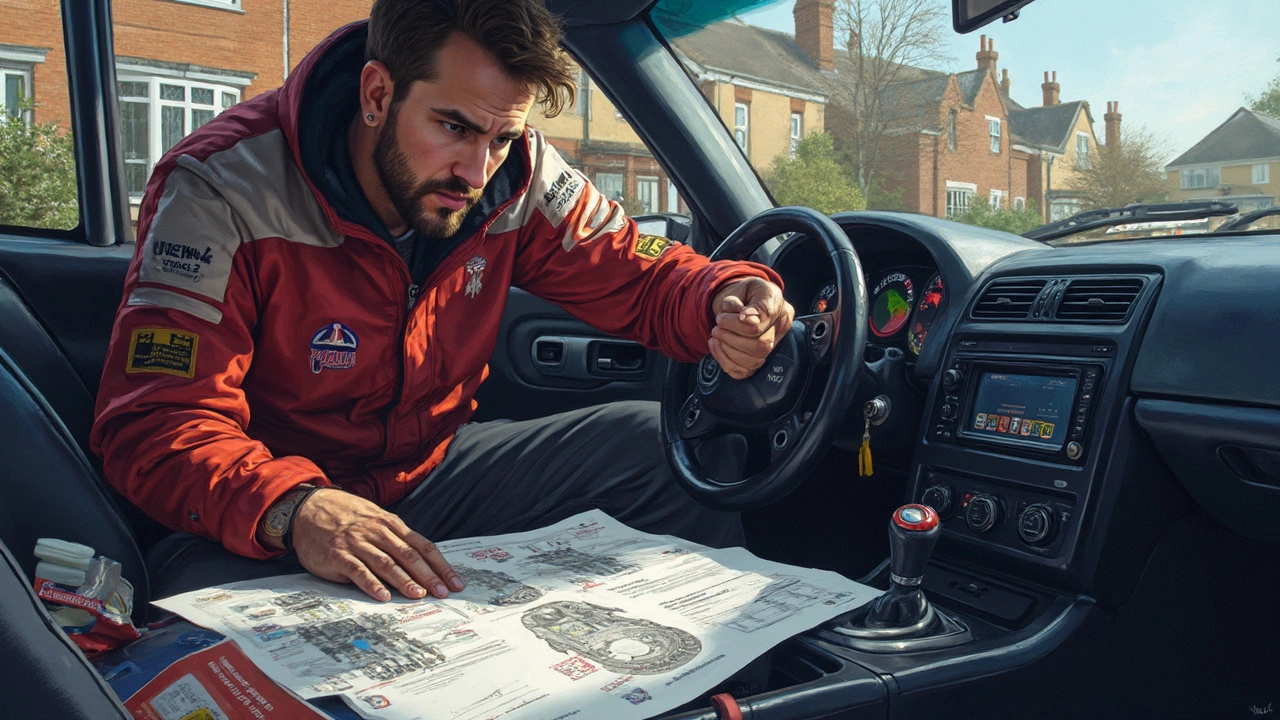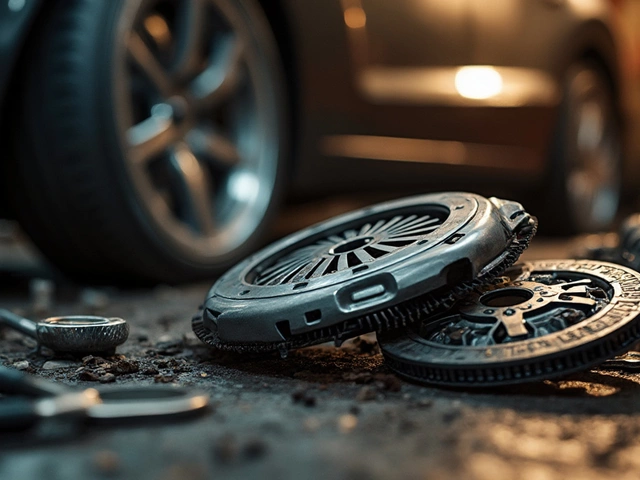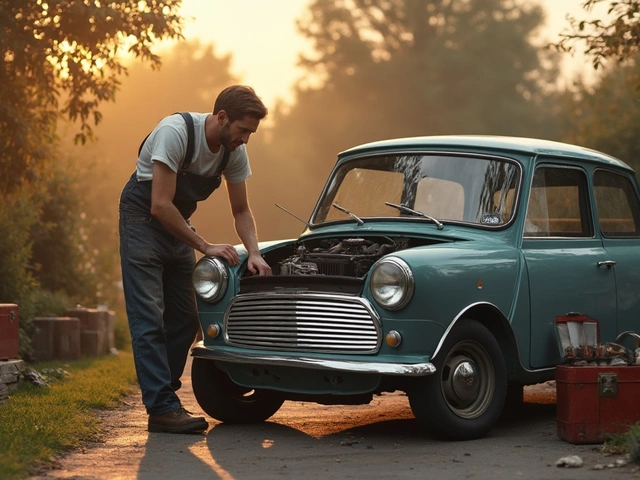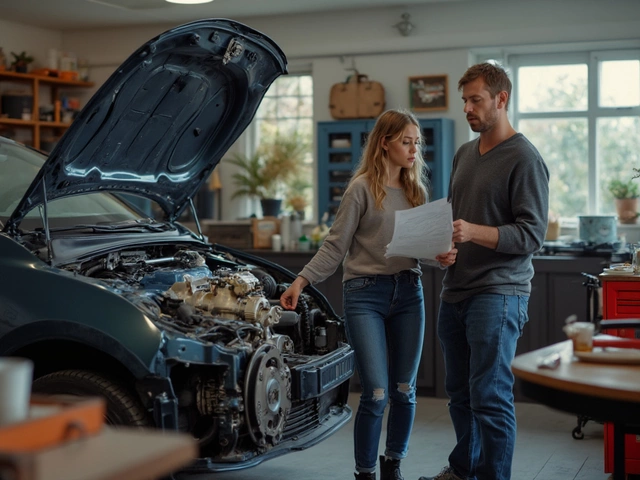If you're into cars and performance, you've probably heard about Stage 2 clutch kits. But what exactly are they, and why should you consider upgrading? Let's break it down. A Stage 2 clutch kit is essentially designed for those who crave a bit more from their ride than what the manufacturer's standard clutch can offer. It’s all about enhancing performance while ensuring your car handles more power efficiently.
Stage 2 kits usually involve components that can handle higher torque levels, meaning they're built for vehicles whose owners plan to up their horsepower game. They provide better durability compared to regular clutches and are often favored by those who regularly indulge in spirited driving or participate in motorsports.
One of the first things to know is that a Stage 2 clutch isn't just about more power; it also ensures smoother and quicker gear changes. This can be a game-changer for drivers looking to max out performance while maintaining control. Keep reading to discover if a Stage 2 clutch is the right pick for your car and driving style.
- Introduction to Stage 2 Clutch Kits
- Benefits of Upgrading to a Stage 2
- Components of a Stage 2 Clutch Kit
- Installation Tips
- When to Consider Upgrading
- Common Myths and Misconceptions
Introduction to Stage 2 Clutch Kits
So what's the big deal with a Stage 2 clutch kit? Well, this kit is like a magic button that lets your car handle more power and still keep it all together. If you’re someone who loves squeezing every bit of performance out of their vehicle, this could be an exciting upgrade for you.
A Stage 2 clutch kit is primarily aimed at those who have already made or are planning to make performance enhancements under the hood. Think of turbochargers, improved exhaust systems, or even a straightforward horsepower boost. A stock clutch often can’t cope with significant power increases, making the Stage 2 upgrade a sensible choice.
Why Go for Stage 2?
This type of clutch kit is known for its ability to provide better grip and torque handling compared to the factory setups. A Stage 2 clutch generally features a more robust construction, often using materials like ceramic, which can withstand higher temperature and stress. These kits offer significant improvements in terms of gear shifts and longevity even under rigorous conditions.
Differences from Stock Clutches
Your everyday factory clutch is made for comfort and efficiency, not speed and power. Most everyday cars come with clutches that offer smooth and forgiving operation, which is great for commutes but not ideal for racing or high-performance scenarios. This is where a Stage 2 clutch shines, ensuring that your car can better handle any enhancements you throw at it.
Stage 2 kits offer a sweet spot for those not ready for the even more aggressive Stage 3 clutches, providing a balance between comfort and performance. If you're increasing your car’s power output significantly, not upgrading your clutch can lead to slippage or even outright failure.
In short, a Stage 2 clutch kit helps bridge the gap between wanting more from your ride and ensuring it can handle the extra load without compromising on reliability.
Benefits of Upgrading to a Stage 2
So, why should you think about getting a Stage 2 clutch? Let's kick things off by saying this upgrade isn’t just for show—there are some real-world benefits that can make your driving experience a lot better.
Enhanced Torque Capacity
The first big advantage is the ability to handle more torque. With a Stage 2 clutch, your car can manage increased horsepower without slipping. This is a must if you’re tuning for more power. It's like having a stronger pair of hands that can grip better without getting tired.
Improved Durability
A Stage 2 clutch kit isn't just tougher; it's built to last longer under stress. For folks who take their cars to the track or enjoy a bit of spirited driving on the weekends, this means fewer worries about wear and tear when you push things to the limit.
Better Performance and Feel
Many drivers notice a significant difference in responsiveness and feel once they switch to a Stage 2. The clutch engagement can be faster and smoother, which is great for anyone who loves the thrill of a brisk gear change. Your ride feels more like a performance car, even if it’s your daily driver.
- Stronger Clutch Disc: Made from tougher materials to withstand higher friction.
- Performance Pressure Plate: Has increased clamping force to prevent slipping.
- More Responsive Engagement: Makes driving feel more connected and dynamic.
What's the Catch?
You might worry about street usability. It’s true that some Stage 2 clutches can be a bit harder to use in traffic because of their stronger grip. However, the trade-off is a significant performance boost, especially if you're into car tuning or frequent track days.
When weighing your decision, consider how often you get into high-performance scenarios versus daily driving. For many, the benefits greatly outweigh the downsides, making a Stage 2 clutch a worthy upgrade.
Components of a Stage 2 Clutch Kit
Okay, so you're diving into the world of Stage 2 clutch kits, and you want to know what's under the hood. Let's get into the nuts and bolts of it. A Stage 2 clutch kit isn't just a single component but a set of parts working together to give you that sweet performance boost.
Clutch Disc
The clutch disc is a big player in the kit. With a Stage 2, you're looking at a more robust construction, often featuring an organic or sometimes a blended material to handle higher temperatures. This makes it wear-resistant and capable of managing increased torque. It's all about strength and longevity here.
Pressure Plate
Next up, the pressure plate. In a Stage 2 clutch kit, the pressure plate is designed to exert more force onto the clutch disc, ensuring it grips better under intense conditions. This is crucial for anyone looking to make quick gear shifts while maintaining control.
Flywheel
Not all Stage 2 kits come with a flywheel, but if they do, it's usually a lightweight version. This means less inertia, leading to faster revs and smoother transitions. Getting lighter wheels isn't just fancy talk; it's a real game-changer in performance driving circuits.
Release Bearing
You can't forget about the release bearing (or throw-out bearing). This small yet critical piece reduces the friction between the rotating clutch components, ensuring smooth disengagement when you press down the clutch pedal.
Alignment Tool
An alignment tool isn't a performance piece, but it's essential for the installation of the kit. It helps set everything in the right place, making sure the clutch kit works perfectly once installed.
Here’s a quick recap:
- Clutch Disc: Built tough to handle high torque.
- Pressure Plate: Gives that extra grip you need.
- Flywheel: Sometimes included to enhance revs.
- Release Bearing: Ensures smooth operation.
- Alignment Tool: Essential for proper installation.
In essence, these components together make a Stage 2 clutch kit the magic behind your car’s improved performance. Each piece has a specific role, contributing to that smooth, powerful ride enthusiasts chase after.

Installation Tips
Thinking about installing a Stage 2 clutch kit? It's definitely something you can tackle if you're handy with a wrench, but there are some vital things to keep in mind. Here's your guide to a successful installation.
Gather Your Tools
First off, have the right tools on standby. You'll need a jack and jack stands to safely lift the car, and a standard toolkit including sockets and wrenches. Make sure to have a clutch alignment tool, which often comes with the kit.
Drain and Remove Components
Before you start, remember to disconnect the battery for safety. Then, drain the transmission fluid and carefully remove components like the driveshaft and transmission. It sounds daunting, but taking it one step at a time really helps.
Install the New Clutch
Once you have clear access, remove the old clutch assembly. Use the clutch alignment tool to properly center the new clutch disk against the flywheel. Align it perfectly to avoid future issues.
Bolting Things Up
With the new clutch in place, reattach the pressure plate, tightening the bolts in a criss-cross pattern to evenly distribute pressure. This part is crucial for performance—ensuring the clutch wears evenly.
Reassemble and Test Drive
After everything's bolted up, reverse your disassembly steps. Refill any fluids you drained, reconnect the battery, and take your new setup for a spin. Pay attention to how it feels; you should notice quicker gear shifts right away.
Proper installation of a clutch kit can make all the difference in your car's performance. Taking time during each step ensures your vehicle handles the new power smoothly.
When to Consider Upgrading
Wondering when it's time to switch to a Stage 2 clutch? It all boils down to how you're using your car. If you're someone who indulges in frequent tuning or has recently upped the horsepower and torque in your vehicle, then a Stage 2 clutch kit might just be right for you. It's designed to handle the additional power without wearing out prematurely.
Performance driving enthusiasts are prime candidates for this upgrade. Whether it’s regular track days, autocross events, or simply a spirited drive through the hills on the weekend, a Stage 2 kit can enhance your experience with smoother and faster gear changes. It’s particularly crucial if you're experiencing clutch slippage or finding that your car’s stock clutch isn’t holding up during high-torque scenarios.
Indicators It's Time to Upgrade
- Increased Power: Have you made significant power modifications such as turbocharging? More power might mean more stress on your current clutch.
- Challenging Driving Environments: Do you drive in conditions that demand extra performance like mountains or rough terrain?
- Current Clutch Issues: Experiencing slippage, difficulty in gear shifting, or decreased pedal response?
| Scenario | Upgrade Need |
|---|---|
| Stock car, minimal modifications | Usually not necessary |
| Moderate engine tuning and enhancements | Consider upgrading |
| Heavy performance modifications | Strongly recommended |
Don’t forget, though – upgrading to a Stage 2 isn't just about performance. You'll also want to consider the impact on daily drivability. Stage 2 clutches can be a bit heavier on the pedal, which might not be ideal for stop-and-go city traffic. Just weigh the pros and cons based on your usage! If you find yourself needing extra performance frequently, this upgrade could be well worth it.
Common Myths and Misconceptions
When it comes to Stage 2 clutch kits, there's plenty of misinformation floating around. Let me clear up a few things so you can make a more informed choice.
Stage 2 Clutches Ruin Everyday Driving
A common belief is that upgrading to a Stage 2 clutch turns your daily drive into a jerky nightmare. While it's true they can feel different from stock clutches, they're not necessarily uncomfortable for daily use. It all depends on the specific kit and your personal preference. Some drivers find that they quickly get used to the feel, especially if they're seeking performance gains.
Stage 2 Equals Racing Only
Another myth is that Stage 2 kits are only for racing. Not true! They're designed for anyone who wants improved performance, whether you're a weekend warrior or just enjoy a spirited drive. Sure, racing enthusiasts love them, but plenty of non-racing folks benefit from these upgrades too.
Endless Longevity
There's a notion that Stage 2 clutches are indestructible. Remember, while they're more durable than stock clutches, they still wear out. Driving habits and maintenance play a huge role in how long they last. Keep in mind that no clutch, not even a Stage 2, lasts forever.
"Performance clutch kits, like the Stage 2 clutch, offer significant gains in vehicle handling dynamics," says Alex Turner, an automotive expert and racing enthusiast. "But understanding their limits and maintaining them properly is key to longevity."
It Requires Expert Installation Only
Many think you can’t install a clutch kit yourself unless you're an expert mechanic. While professional installation is always a safe bet, seasoned DIYers often successfully install them with the right tools and some patience. Just be prepared to follow instructions closely, or consult guides and videos that walk you through the process.
Hopefully, this helps clarify some of the confusion around Stage 2 clutch kits. Making an upgrade like this is a serious investment, so knowing the facts will guide you toward a smarter decision.


